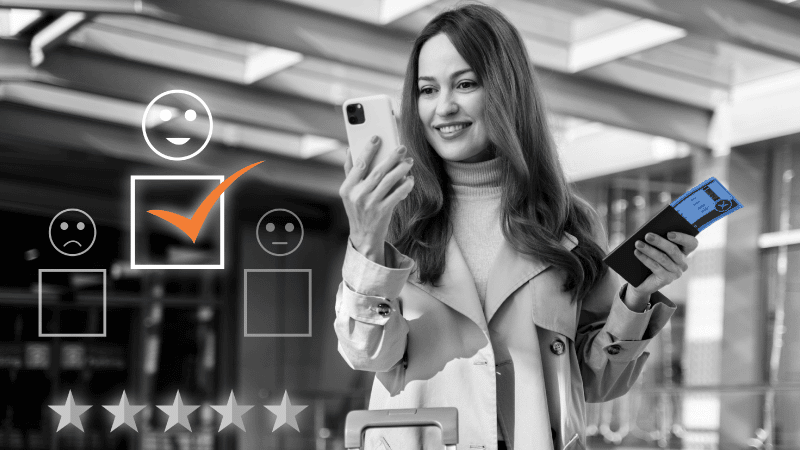When it comes to patient financial engagement, traditional models are like the hare from “The Tortoise and the Hare”: racing off the starting line, hitting the phones hard and pushing for a customer response.
But as Aesop’s fable shows, it takes more than speed to produce the desired result. Today, self-service models—driven largely by digital tools and communications—offer a “work smarter, not harder” approach that boosts engagement while reducing total cost to collect.
The Need for a More Modern Approach
Half of American consumers carry medical debt, up from 46% in 2020, a medical debt survey shows, with 57% owing at least $1,000. Most expenses stem from diagnostic tests, hospitalization, emergency department visits or outpatient services, the survey found. It’s just one reason why Forbes called medical debt “the new chronic condition.”
COVID-19 underscored the need for a new approach to patient financial engagement. Just as disparities in access to care became evident during the pandemic, so did the uneven impact of medical debt on specific populations. Across the country, Black and Hispanic adults are more likely to hold medical debt than white or Asian individuals, a consumer analysis found. Geographically, households in the southeastern and southwestern United States are more likely to shoulder medical debt, in part because these regions did not expand Medicaid coverage.
The pandemic also supercharged digital communications—first out of necessity, then out of preference. Today, 80% of consumers want to communicate digitally with healthcare providers, including about their medical bills. Digital financial engagement, with the ability to self-service accounts, also promotes higher comfort with the medical debt resolution process. A U.S. Bank survey found:
- 58% of consumers are comfortable resolving payment questions via live text or video chat, which offers a higher degree of privacy than face-to-face communications or, in some instances, telephone calls with staff
- Nearly half of consumers desire contactless healthcare payment
- 44% of consumers will pay their healthcare bill more quickly when notified about their patient account balance via email, text or automated phone notification
Now, as consumers lean into digital options for healthcare payment, savvy healthcare organizations are exploring digital options for engaging patients in medical debt from the privacy of home.
Keys to Crafting a Digital Engagement Approach
Just as businesses across industries are leveraging digital tools to strengthen the customer experience, healthcare revenue cycle leaders have a vital opportunity to digitally transform medical debt collection. Here are three ways to deploy a proactive, non-intrusive approach to patient financial engagement that enhances the customer experience while strengthening the organization’s bottom line.
1. Deliver customized communications on the channel of the consumer’s choice.
When it comes to digital financial engagement, one size does not fit all. For instance, Baby Boomers tend to prefer email communications, while millennials are more apt to respond to communications via text. That’s why an omnichannel approach is crucial.
Initiating communications on preferred digital channels preserves customer privacy and convenience. It also presents the opportunity to offer customized solutions for addressing medical debt on a channel of the patient’s choosing. Identify which consumers are most vulnerable to facing challenges with healthcare payment. Then, ask consumers to indicate their preferred method of communication.
At Montefiore St. Luke’s Cornwall, a not-for-profit hospital in Newburgh, N.Y., the revenue cycle team relies on predictive analysis to determine which patients are most likely to experience difficulty paying their bill. From there, staff use bill estimation tools, eligibility review software and address verification to empower staff to tailor digital communications to individuals’ unique circumstances. Today, the hospital boasts a 95% bill estimate accuracy rate and has recorded a 125% increase in point-of-service collections. The use of estimation tools and digital engagement continues to drive down consumer medical debt. Staff also are more empowered to determine the most appropriate payment options and generate a customized financial care plan based on the data they receive.
2. Look to digital self-service as the starting point in the patient financial journey.
An intuitive self-service channel helps consumers manage their account at a time that is most convenient to them and via a medium that they are most comfortable using. In our experience, consumers are most likely to use self-service tools to manage their medical accounts after 8 p.m. or on the weekends—times when they are least likely to be busy with other things. Consider pairing self-service tools with robotic process automation (RPA) to help patients get answers to the financial questions that are top of mind, from “How much will my insurance pay for my care?” to “What are my options for payment?” This gives patients greater confidence that the amount due is truly the amount they owe. One health system that used RPA to engage self-pay patients drove a 70 percent increase in payment of balance due after insurance for this population, while the health system’s liquidation rate rose 43 percent.
3. Use machine learning to govern each step of the patient financial engagement process.
Traditional debt collection strategies rely on human instinct—with wildly varying results. Machine learning helps determine which consumers are most at risk of default using predictive modeling. With this information in hand, patient financial representatives can reach out to these consumers digitally to offer restructured payment plans or financial counseling support. They can also tweak debt collection strategies based on such factors as salary, profession and historical interactions of the consumer and use “smart dialogue” to generate the desired response. One rural hospital found that digital tools combined with artificial intelligence resulted in a 76% financial engagement rate.
Using the Right Resources for the Best Result
In “The Tortoise and the Hare,” there’s a point early in the story, before the race takes place, where the hare asks the tortoise, “Do you ever get anywhere?” As this fable demonstrates, it is intelligence, not speed, that gives organizations the best chance of achieving desired results. By focusing on ways to incorporate consumers’ preference for digital communications and self-service into medical debt resolution, hospitals can more effectively attain the engagement rates they seek while boosting their bottom line.
This article was written by Randall Shafer Head, Hospital Business at Firstsource and was first published on HealthCare IT Today










